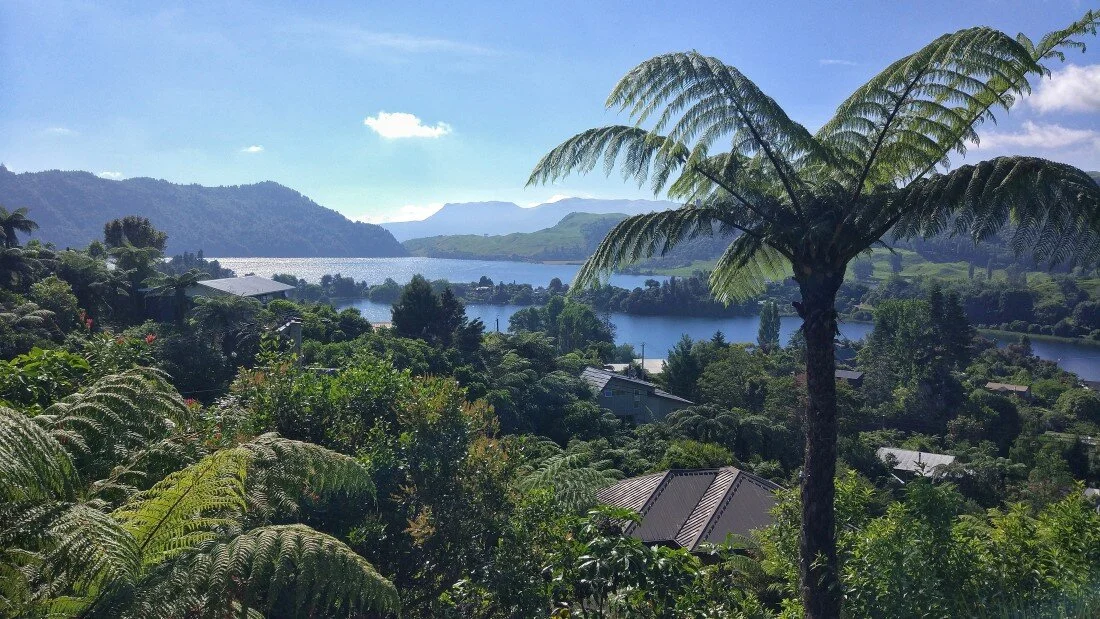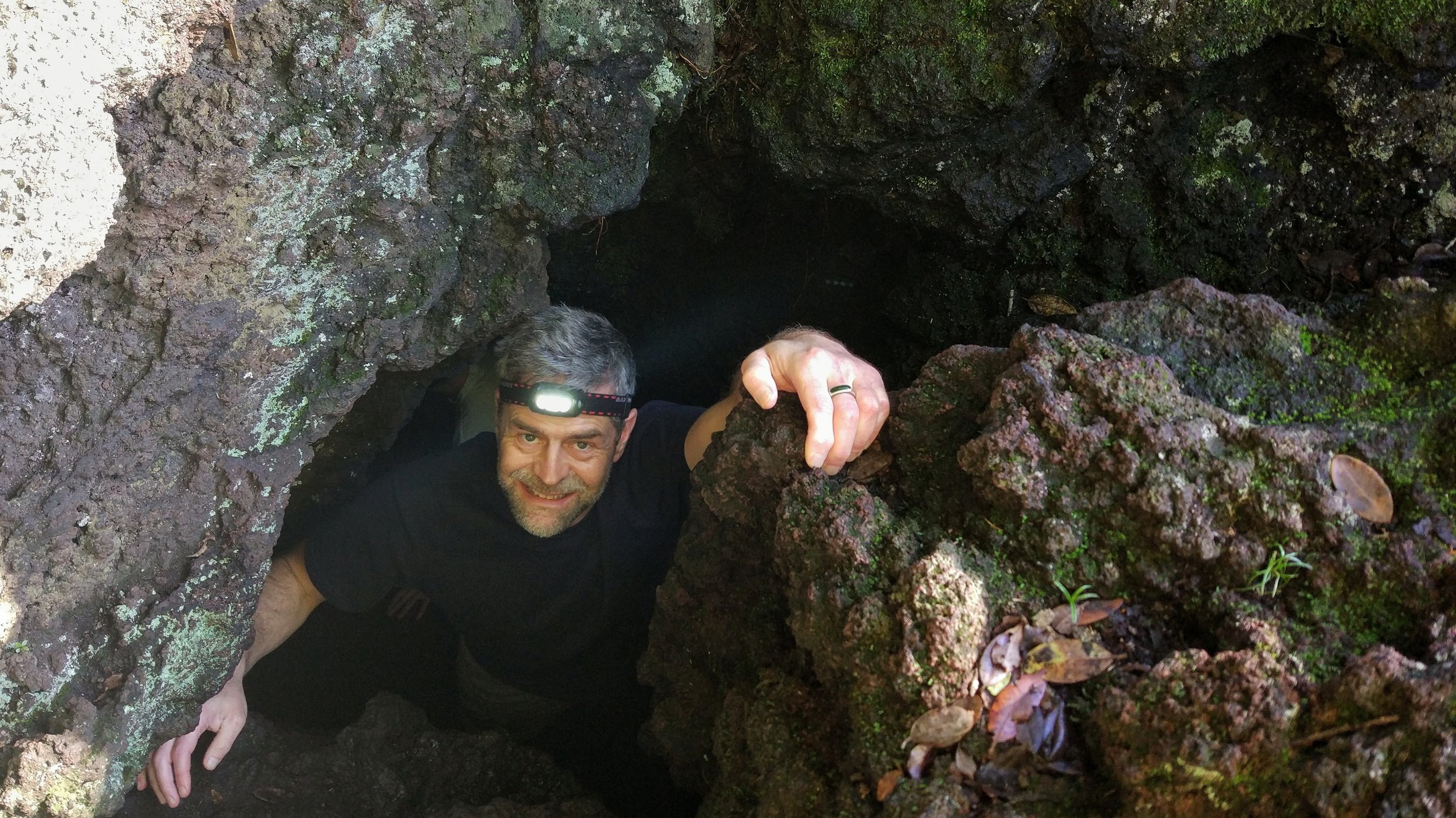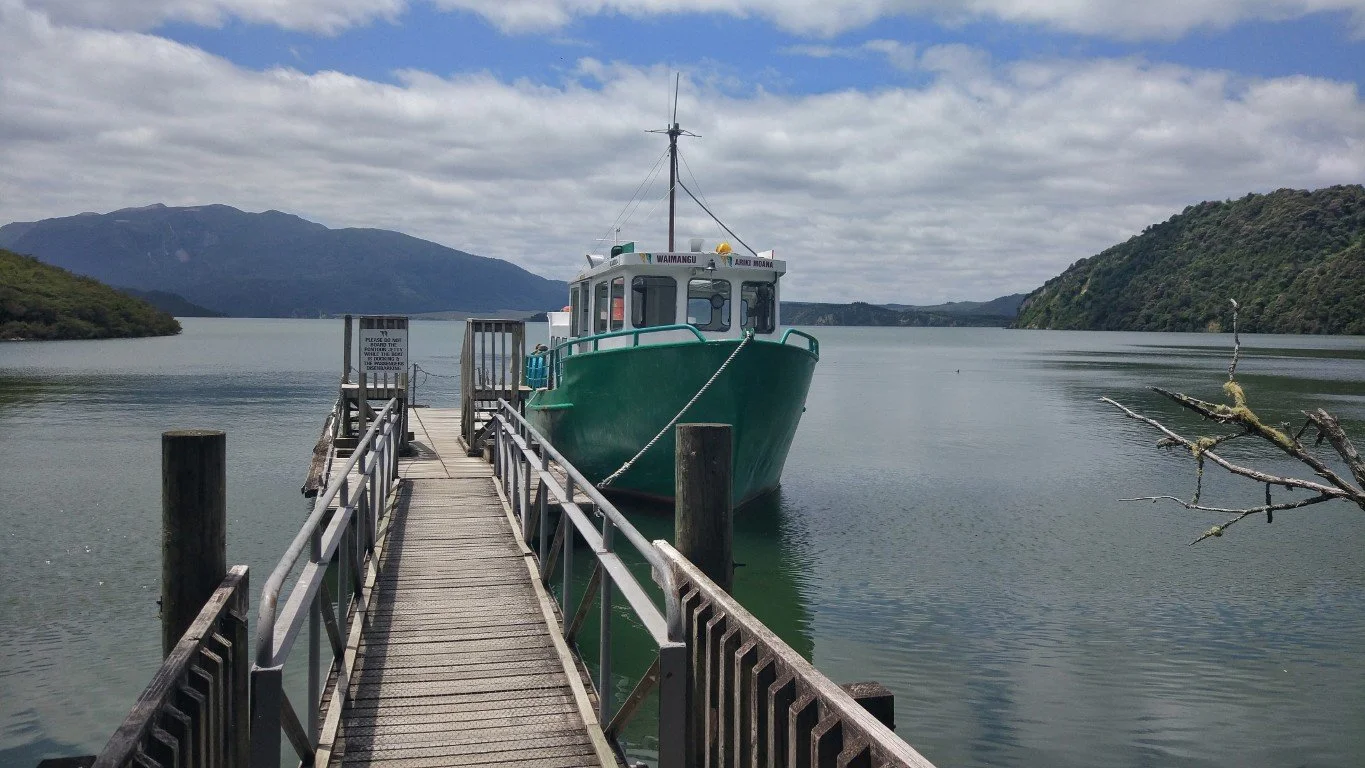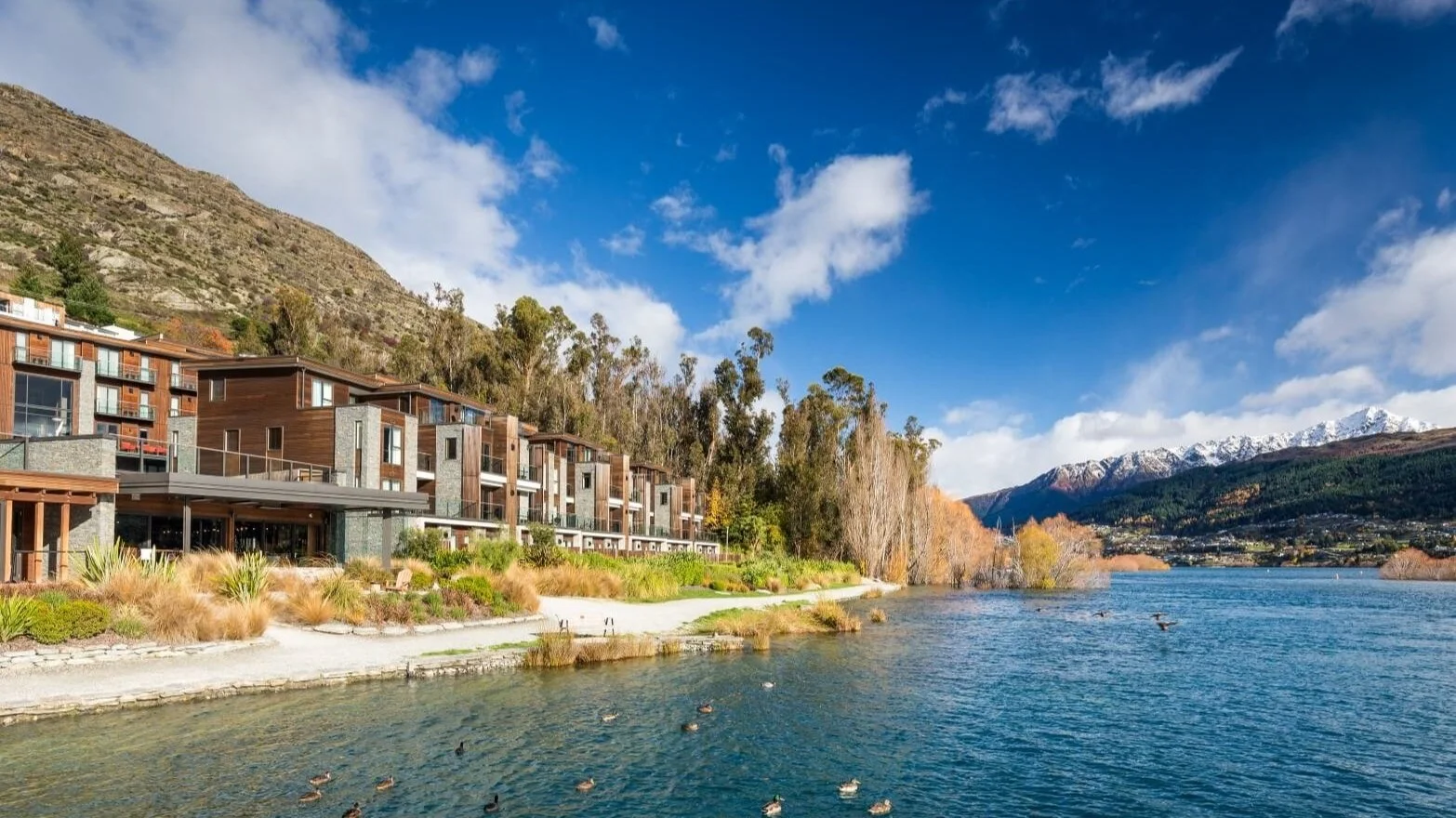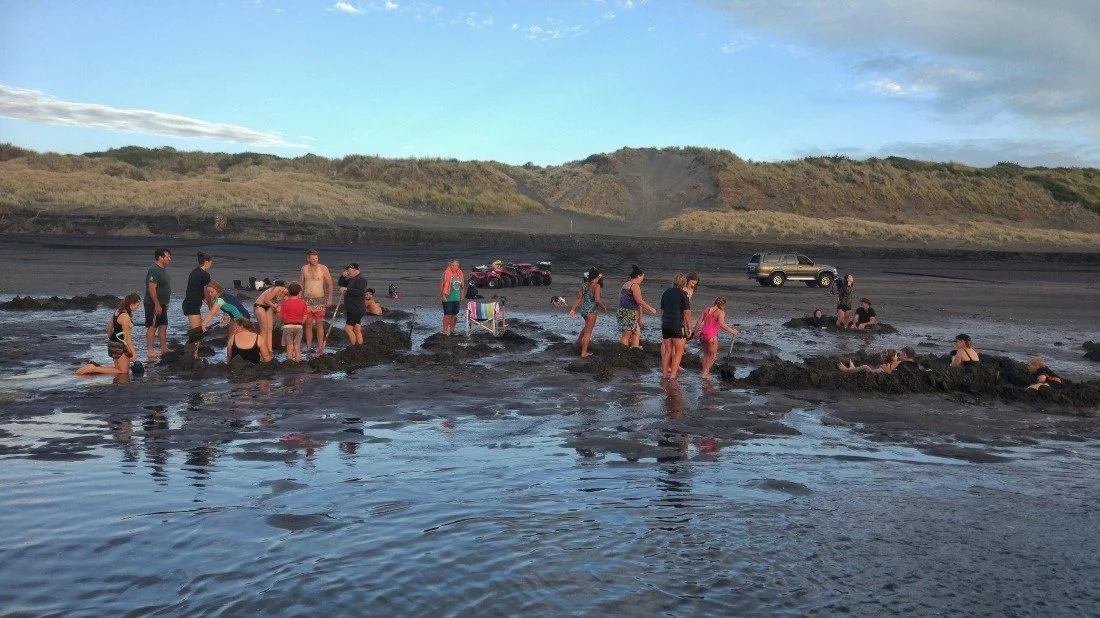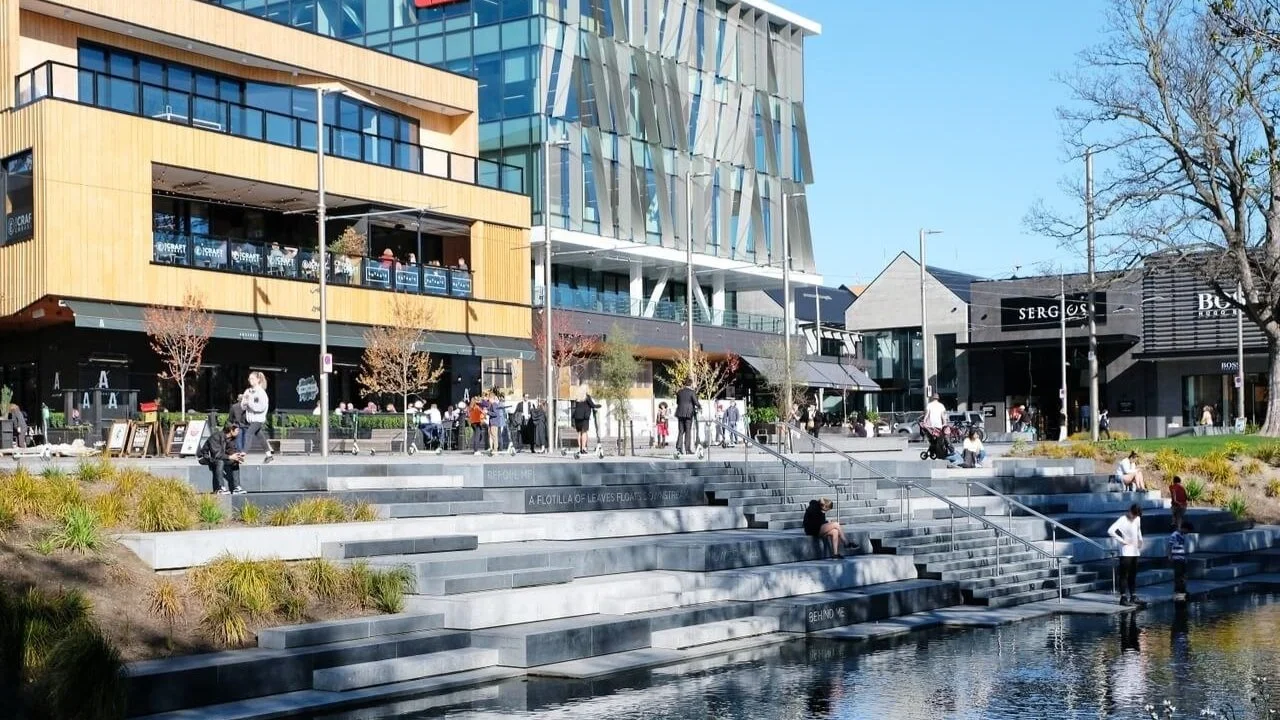Rangitoto Island - Walk On Auckland’s Youngest Volcano
/I love volcanoes! They are majestic, fascinating mountains (like most of the New Zealand volcanoes) or disguised, water-filled craters (like giant lake Taupo). Often, they come with a unique landscape, nature and geothermal activity. They are beautiful and admittedly a little scary. Rangitoto Island walk has it all.
The Auckland volcanic field has over 50 volcanoes! Luckily, they are all extinct or dormant, but the earth crust is thin and even though it’s unlikely to happen in the foreseeable future, an eruption could happen.
The youngest Auckland volcano is Rangitoto. The Rangitoto Island eruption happened some 600 years ago in the Hauraki Gulf, right next to Motutapu Island, which is - funny enough - the oldest volcano in the area.
Rangitoto Island is a volcano in New Zealand that has the typical cone shape. It’s an iconic landmark of Auckland, as it can be seen from almost everywhere. Rangi definitely belongs to the best attractions in Auckland New Zealand.
During my first time in New Zealand I always wanted to go and explore Rangitoto Island, but for some reason never made it. Now, about 9 years later, it was finally going to happen. I would finally meet Rangi up close and personal!
After our first, unsuccessful, attempt to visit Rangi in Summer (and ended up on Waiheke Island instead, which made for a lovely day), we decide to give it another try in the off-season.
Ferry to Rangitoto
The Rangitoto ferry is operated by Fullers and takes about 20 minutes. Before boarding the ferry you have to brush off your shoes at the pier. Additionally, the staff makes sure you only bring bags and backpacks with you that zip close. Rangitoto volcano is a pest free island and any seed, any tiny ant could potentially destroy the eco-system.
Once on the ferry, we order a Mocha and enjoy the short ride.
Rangitoto walk is a step in time
We berth on the main pier and are instantly transported into another world. The waves roll over rugged lava sufaces, the first of many lava flows we’ll see throughout the day. There’s a little picnic area and some signs that tell the history of the Rangitoto Island eruption that marked its birth 600 years ago up to now.
A bit further back is the start of the Rangitoto Island summit walk. So, how long does it take to climb Rangitoto? The direct way up takes about an hour and leads us through rocky volcanic terrain. As we walk, we marvel at the lava fields and how nothing seems to grow on the stones.
But if you look closely, there are patches of lichen and moss on the black stones. When Rangitoto Island Auckland was young, everything looked this way. As the lichen and moss died off, it turned into humus and the first plant seeds, transported by birds, rooted.
The first big plants on the island were Pohutukawa trees. The so-called New Zealand Christmas trees (they bloom in a powerful red around Christmas time) turned Rangitoto into the biggest Pohutukawa forest in the world. They seem to love the volcanic soil because they grew at a speed that no scientist can explain so far.
As we slowly make our way to the top, we notice several vegetation changes. The further up we walk, the denser the trees become. Less lava fields and moss patches but more actual forest.
I have no idea if this is actually a real thing, but we feel like we’re witnessing the creation of earth in a fast-forward, starting from its birth (at the bottom of the island) to modern day forest (at the summit).
Exploring the Rangitoto lava caves
One of the coolest things to do on Rangitoto, in our opinion, is to go explore the Rangitoto Island lava caves. The caves formed when the lava flowed down the mountain, the cooler air hardened the outer surface, but the core kept flowing.
There is a little loop walk through the lava tunnels, but they’re not very well signposted. At first I was a little worried we might end up taking a wrong tunnel and get stuck, but luckily, there are plenty of people looking for the same adventure. Getting lost hardly possible.
We leave our backpacks at the entrance of the lava caves track and switch our head torches on. It’s dark in the caves and the floor is uneven, taking a torch is strongly advised.
It doesn’t feel as claustrophobic as I thought. It’s possible to mostly walk upright, which helps a lot.
Seeing life from underneath the surface is another unreal experience. The walls are colored in orange, yellow and purple thanks to the abundance of iron and sulfur from the eruption and roots are hanging from the ceiling. I feel like I shrunk and get to explore the world from a completely new angle.
Before we know it we arrive at the end of the loop and climb out of the last cave. I want to do it all over again, but we are a little pressured on time, so we keep walking towards Rangitoto summit.
At the top - Rangitoto Summit
The view from Rangitoto Island summit is just breathtaking! A panoramic, almost 360° view over Hauraki Gulf, blue water, green islands, puffy white clouds, the Auckland skyline and Devonport in front of it. We are over the moon and can’t stop taking panorama pictures!
The summit itself is quite busy since it’s the destination of pretty much every Rangitoto Island visitor. I’m not sure I want to know what it’s like up there in summer.
We eat our packed lunch, the amazing view in the backdrop. When it’s time to walk back down, we decide to take a different route than we originally planned. We took a bit longer than expected on the way up thanks to awesome caves and marvelling at lava fields, which is why we can’t take the walk around half the island. The ferry leaves at 4pm sharp and you better be there or it’s gone.
We don’t want to risk having to call an expensive water taxi, so we walk down the gravel road where the Volcanic Explorer tour usually comes up.
Arriving back at the wharf a few minutes early, we still have time to peak into the cute little holiday houses (called bach in New Zealand). Before Rangitoto became a pest free island managed by the Department of Conservation, the island had a lively bach culture and lots of parties going on. Some of the baches can still be rented for a night or two.
It’s 4pm and the ferry back to Auckland hoots three times, the sign they’re about to leave. I take a last look at “my” volcano from up close, knowing we will be back and explore more for sure.
Verdict
For me, it was totally worth waiting so long to get to Rangi and finally seeing her from up close. I find overall that it’s one of the most amazing day trips from Auckland, not just for volcano-freaks like me. Definitely put this on your list of places to visit in Auckland!
Rangitoto Island Ferry
If you don’t have your own boat, there is only one way to get to Rangitoto: by ferry. Fullers departs from Auckland City several times per day. If you book in advance, you will have to decide on a departure time from Auckland to Rangitoto. Which ferry you want to take back, however, is completely up to you.
I suggest you take latest the ferry at 10:30am to make sure you have enough time
Other ways to explore the island
Rangitoto Volcanic Explorer (Update Jun 2022: Not currently operating)
One of the coolest attractions in Auckland is the Volcanic Explorer tour on Rangi. After arriving, your tour starts in a fun 4WD road train that is pulled by a tractor. As you make your way slowly up the mountain, your knowledgeable guide will happily tell you all about the history of Rangitoto.
As the train can’t go all the way to the top, you will still have to climb some stairs to the top. I’m not gonna lie, there are 374 steps to the summit that are going to work out your legs and butt cheeks, but it’s totally worth it!
After taking in the view, you’ll go back to your train and return to the wharf via the western side of the volcano.
Coastal Walks
If you don’t want to do what most people do on Rangitoto Island volcano, take one of the coastal walks and explore Rangi’s rugged shoreline. There is a walking track towards Islington Bay when you walk left from Rangitoto Wharf. Turning left from the same spot, you walk along the coastal road towards Mackenzie Bay and Beacon Lighthouse.
Can you stay on Rangitoto Island? - YES!
There is the possibility of staying for the night in one of the old baches on Rangitoto and relive the feeling of the good old days. It will be a very special experience!
Please note, though, that everything is very basic and that there is no hot water available. Also, the baches are located in Islington Bay, about 90 minutes walk from the ferry terminal, so you better don’t take too much stuff with you. But wouldn’t it be romantic?
The few baches available book out fast, so make sure to plan ahead!
Important to know for visiting Rangitoto Island
Brush off your shoes and control your bag and/or backpack for unwanted animals
There is no shop and no food or water on the island. You’ll have to bring your own
There are toilets on Rangitoto Island, but only at the ferry terminal and only long-drops (basic ones)
Bring a lot of drinking water as the black rocks can heat up in the sun and make it feel hotter than it is.
Take your time for the walk and to take pictures. I suggest the 10:30 am ferry or earlier so you don’t feel rushed. You can always take an earlier ferry back if you run out of stuff to do.
Take a torch for the lava caves, preferably a head torch to have your hands free
Come back in time for the ferry! Lots of people stuck on the island because they underestimated the walking time. The ferry won’t come back and pick you up and you’ll have to organise a water taxi to get back to the mainland.
Enjoy your day on Rangitoto Island as it’s one of the most spectacular things to do in Auckland!
Other islands in the Hauraki Gulf
There are lots of islands in the Hauraki Gulf that make great day trips from Auckland.
The most popular one is Waiheke Island. It's a favourite for foodies and wine lovers as it has an abundance of little boutique wineries. But the beaches are just as beautiful and there is great swimming. The ferry to Waiheke runs often and long, so you'll have plenty of time.
Tiritiri Matangi Island is a bird sanctuary. For a small amount you can join a bird tour that is operated by volunteers. We learned so much and are now able to name different birds when hiking, which makes it even more enjoyable.
More Articles About Auckland And Waiheke
Need to know where to stay in Auckland? Best Hotels in Auckland right this way!
Walk between two oceans on the Auckland Coast To Coast Walk
If you’re like me and LOVE volcanoes and geothermal activities, you might also like what awesome things there are to do in Rotorua.

